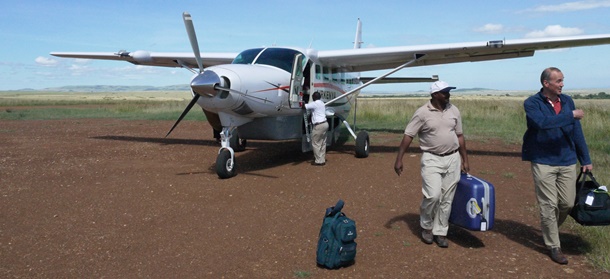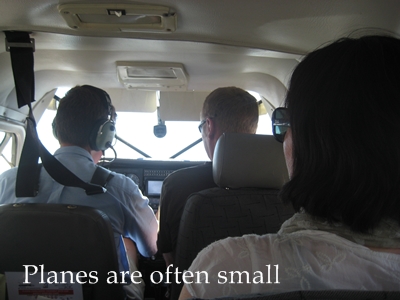 Clients often ask us which is better – a fly-in or a drive-in safari? For those who are unsure, these are the two most popular ways to go on safari.
Clients often ask us which is better – a fly-in or a drive-in safari? For those who are unsure, these are the two most popular ways to go on safari.
A fly-in safari, as the name suggests, means you fly into the National Park and do your safari in the vehicles of your camp or lodge. A drive-in safari means you drive to the park in your own vehicle and usually do your game drives in it too.
So which is better? Well, as so often, the answer is more complicated than this. In some places you can only fly, either because roads don’t exist, the terrain is too rough and/or the distances are too great. An example of this would be a safari in the heart of the Okavango Delta, a vast area of wetlands in Botswana. There is no option but to fly to your camp. Likewise, some areas do not have airstrips of a suitable standard to take passenger airplanes, meaning that driving to your destination is the only answer. An example of this would be a visit to Lake Eyasi in Northern Tanzania.
But if you did have the choice, what are the pro’s and con’s?
A fly-in safari.
Pro’s:
– Its quick. You can often reach your destination in a fraction of the time it would take if driving on African roads. You can therefore save a lot of time if time is precious.
– Its scenic. You will get great views of the countryside, often seeing game as you travel and a birds-eye view of the escarpments, parks and forests.
 – Its exciting. The planes are small, designed for use on the small dirt airstrips they often use. Some to places like the Masai Mara may have up to 38 seats, but most will be small 4-16 seaters, with your pilot sitting with you.
– Its exciting. The planes are small, designed for use on the small dirt airstrips they often use. Some to places like the Masai Mara may have up to 38 seats, but most will be small 4-16 seaters, with your pilot sitting with you.
– You game-drive in camp/lodge vehicles, meaning your guides are specialists to that area and know all the latest sightings.
Cons:
– You miss out on seeing lots of the country you are in, and your perspective will be airstrips and National Parks, rather than seeing everyday life.
– You can miss a flight! If your connection is late and you miss a flight you have to wait for the next one, and that could be a wait of a day or two. One of our staff once missed her international flight home as her connecting flight from the Serengeti couldn’t take off for nearly two hours due to giraffe and buffalo on the runway. You don’t have that problem at Heathrow..
– Flights get cancelled, usually due to low cloud. These are small planes flying to small airstrips and good visibility is a must.
– They can be bumpy! Small planes tend to bounce around a fair bit in the hot air. If you like roller-coasters, of course, this should be in the Pro column…
– Camp/lodge safari vehicles are shared with other guests and rarely private to you.
Drive-in safaris.
Pro’s:
– You have your own private vehicle and driver. This means on game-drives you always have a perfect view from the windows and roof hatch. It also means you get to know your driver-guide who can talk about and discuss normal life in your destination, as well as about the flora and fauna.
 – You can stop whenever you want, wherever you want for as long as you want. No timetables to keep to. You get to see everyday life in your destination, as the people go about their everyday lives.
– You can stop whenever you want, wherever you want for as long as you want. No timetables to keep to. You get to see everyday life in your destination, as the people go about their everyday lives.
– Your driver will know your interests and previous sightings, meaning you can focus on things you specifically want to see rather than the interests of the many.
Cons:
– African roads are not known for their glass-like surfaces, so journeys can be long and bouncy.
– Vehicles break down, roads get blocked and bridges washed away, so delays can happen.
The answer to the question of which style is better really depends on where you are going and what you want to do. For many safari holidays, a combination of the two is possible, allowing you to see something of the country and enjoy the company of a driver-guide, with one or two flights to cover the larger distances. Whichever you choose, few people feel they have made the wrong decision as both styles of safaris will give you a holiday that is both memorable and exciting.

